The Best Stocks of the Century
As we near the 25-year mark, we looked at which stocks have returned the most. Here are the 10 best stocks of the century so far.


Sure, that stock you bought last year has doubled, but have you ever picked a 10-bagger – one that went up 10 times your purchase price? What about a 100-bagger, or maybe even a 1,000-bagger?
Such things exist. We looked back to the turn of the century to see which stocks created the most wealth over nearly 25 years.
We started with the S&P 1500, an index tracking a broad swath of U.S. stocks of all sizes, and used return data from S&P Global Market Intelligence.
From just $107.88 $24.99 for Kiplinger Personal Finance
Become a smarter, better informed investor. Subscribe from just $107.88 $24.99, plus get up to 4 Special Issues

Sign up for Kiplinger’s Free Newsletters
Profit and prosper with the best of expert advice on investing, taxes, retirement, personal finance and more - straight to your e-mail.
Profit and prosper with the best of expert advice - straight to your e-mail.
To make our top-10 list, a stock had to return more than 30,000%. The S&P 1500, by the way, has returned 666% in the same period.
Some stars of the 21st century didn't make the cut simply because they haven't shone quite long enough. Netflix (NFLX) is one. The DVD shipper-turned-streamer debuted its stock in May 2002, a little late for this list. But since its initial public offering, Netflix has returned more than 100,000%.
Still, our top 10 is loaded with power hitters. How did they do it, and what's next for these best-of-the-best companies? Read on to find out. (Prices and returns are as of June 30, unless otherwise noted.)
1. Monster Beverage
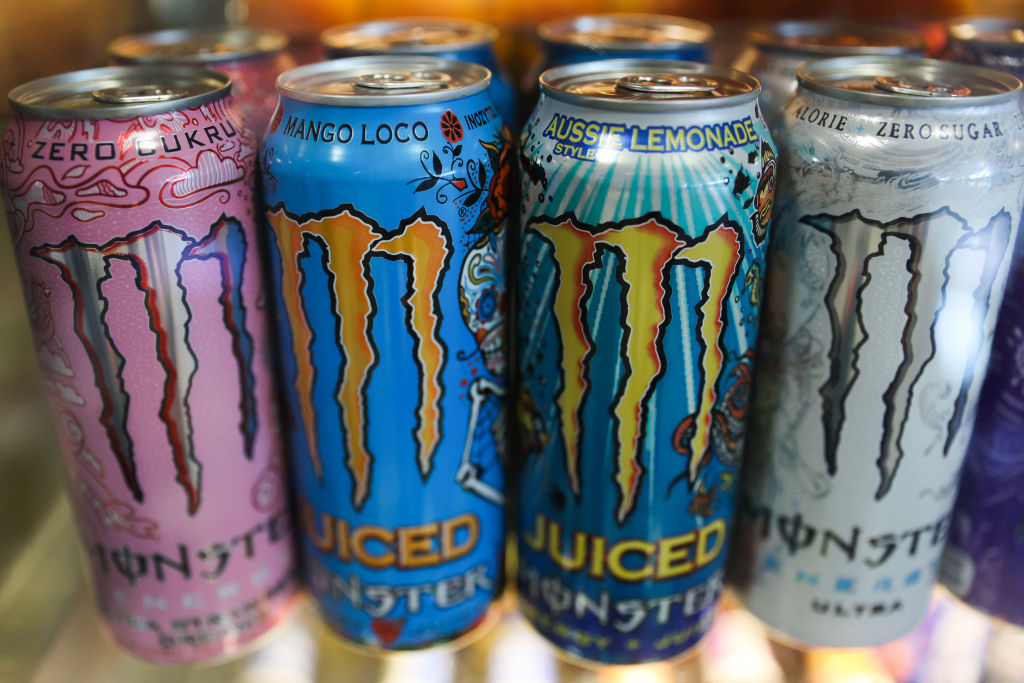
- 25-year cumulative total return: 155,103%
- Growth of $1,000: $1,551,030
Monster Beverage (MNST) is a monster, indeed. The company was known as Hansen Natural, having started in the 1930s as a seller of juices. By 2012, shareholders voted to change the company's name to Monster, reflecting the line of energy drinks that today make up more than 90% of revenue.
The sellers of these drinks, which contain more caffeine and sugar than traditional soft drinks, market them as boosting physical and mental energy. Monster is now the biggest player in a global market estimated at $90 billion in sales, with a 46% share in North America, according to Morningstar analyst Dan Su.
The key to dominance was a 2015 deal with Coca-Cola (KO) that saw the beverage giant distribute Monster products worldwide in exchange for a stake in the company that stands at about 20% today.
The energy-drink category is still growing faster than most beverages, and there's a new offshoot: performance beverages, or "better-for-you" drinks," which are often sugar-free and more narrowly target athletes and health-conscious consumers.
Andrew Strelzik, of BMO Capital Markets, who has a Hold rating on the consumer staples stock, says Monster has lost share in the category recently. Nonetheless, Monster shares have gained more than 20% since sales growth picked up in the fourth quarter.
That has left a number of analysts saying the market is now too confident about the firm's prospects. According to S&P Global, just 14 of 26 analysts who follow the stock have a Buy rating on Monster; three give it the rare Sell.
2. Nvidia
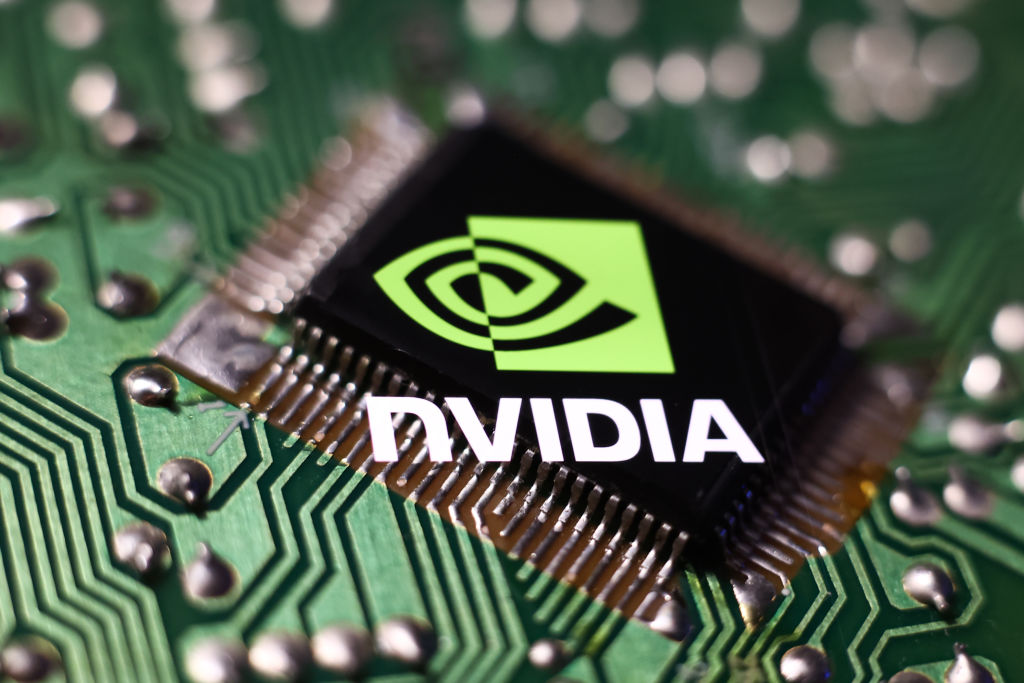
- 25-year cumulative total return: 126,100%
- Growth of $1,000: $1,261,000
As investors, we were always told that once a small company becomes a big one, and then a huge one, growth rates have to fall to reasonable levels. That's just math.
Then came Nvidia (NVDA). The company recorded $44 billion in sales in the quarter that ended April 27, up nearly 70% from the same quarter the year before.
Analysts estimate Nvidia will record roughly $200 billion in sales in the fiscal year that ends in January, up from $130 billion in the prior year and just $27 billion two years before that.
Nvidia invented the computer chips called graphics processing units. GPUs can execute more complex processes than traditional computer chips can, making them the best option not only for video games but also for artificial intelligence.
"Nvidia took an early lead in AI GPU hardware, but more important, developed a proprietary software platform," says Morningstar's Brian Colello. These tools allow AI developers to build their models with Nvidia and makes it less likely another chip designer will emerge as a leader in AI training.
Colello estimates Nvidia's fair value at $140 per share, about 11% below its recent close. That makes him conservative by Wall Street standards, as 59 of 75 analysts have a Buy rating on the tech stock. The median target price for the shares over the next 18 months is $175 a share, with the high $250, according to S&P Global.
"AI is growing faster than any platform shift before, including internet, mobile and cloud," says analyst C.J. Muse of investment firm Cantor Fitzgerald, who names Nvidia a "top pick."
3. Apple

- 25-year cumulative total return: 91,686%
- Growth of $1,000: $916,860
At the turn of the century, Apple (AAPL) was just showing signs of life after the first few years of founder Steve Jobs's return. We hadn't yet seen the iconic products that have made Apple what it is today. The iPod came in 2001, the iPhone debuted in 2007, and the iPad arrived in 2010.
The firm had just under $8 billion in revenue in the fiscal year ending September 2000; in fiscal 2024, it had nearly $400 billion in sales, with the iPhone making up just over $200 billion of that.
Services, a business unit that was inconceivable in the last century, brought in $96 billion. It includes its warranty program AppleCare, cloud storage, digital content sales and its Apple Pay system.
Now, Apple has what analysts call an ecosystem – an interlinked product suite of computers, phones, tablets and watches. Call it "sticky" – when you get deeper into Apple's world, you're more likely to buy more Apple products than to switch.
It has generally been a bad idea to bet against Apple over the past 25 years. But should you buy in right now? Only 26 of the 49 analysts who cover Apple say yes with their Buy ratings. The stock trades at 28 times expected earnings for the year ahead, above its historical average.
Others are advising clients to pause on Apple for now. Martin Yang, of Oppenheimer, who rates the stock a Hold, says Apple's high valuation, lack of apps that allow consumers to use AI, and stronger competition in China and emerging markets will keep it from increasing sales and profits above expectations.
4. Booking Holdings
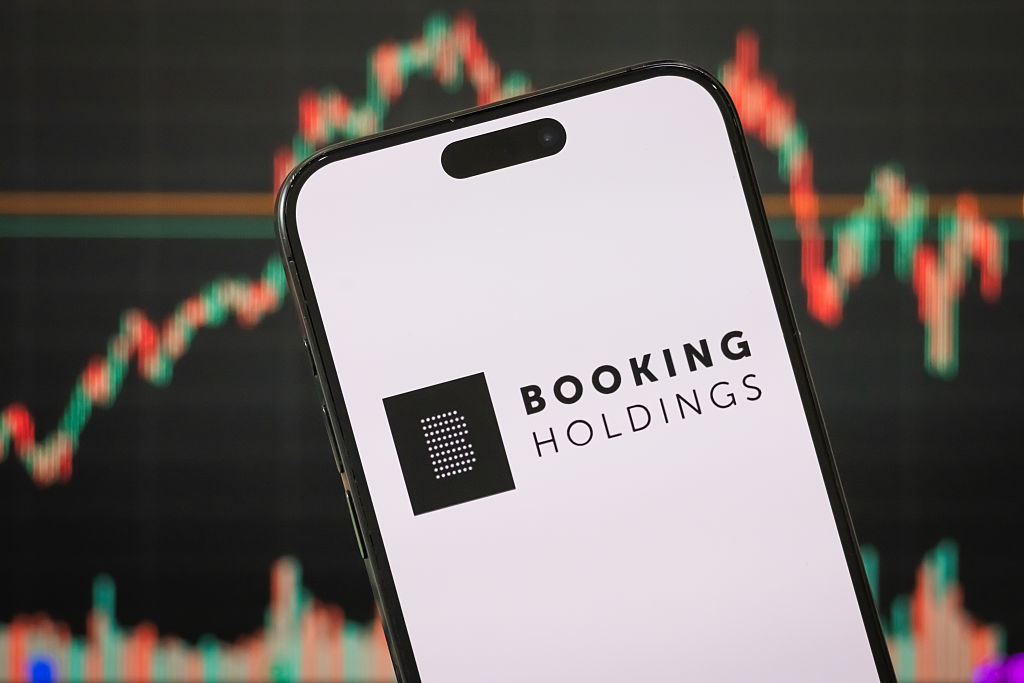
- 25-year cumulative total return: 74,343%
- Growth of $1,000: $743,430
So many moments of the 1990s tech boom are now just faded memories. But William Shatner, the Star Trek icon and former spokesman for Priceline.com, still pops up in their ads today.
Priceline the company, however, became Booking Holdings (BKNG) in 2018. The name change recognized that Booking.com, a European-focused hotel-reservation site that Priceline bought in 2005 for just $135 million, is the company's dominant business. (The company's other well-known properties include Kayak, OpenTable and Asian site Agoda.)
That makes Booking the biggest and most geographically diversified of the travel sites. RBC Capital Markets analyst Brad Erickson, who likes the stock, says that "under almost any" economic scenario, the company "should fare better than most."
The company's most recent results showed weakness in U.S. travel, but the damage was limited by Booking's "uniquely broad geographic exposure," he says.
One big worry for Booking and its peers? Travelers using AI, rather than legacy travel sites, to plan vacations.
Erickson says he recently used four AI platforms to look at hotel rooms; only one let him make the reservation. Travel sites that allow users to complete a transaction may be more insulated from AI, or even helped by it if they are larger, better-known brands.
5. Tractor Supply Company
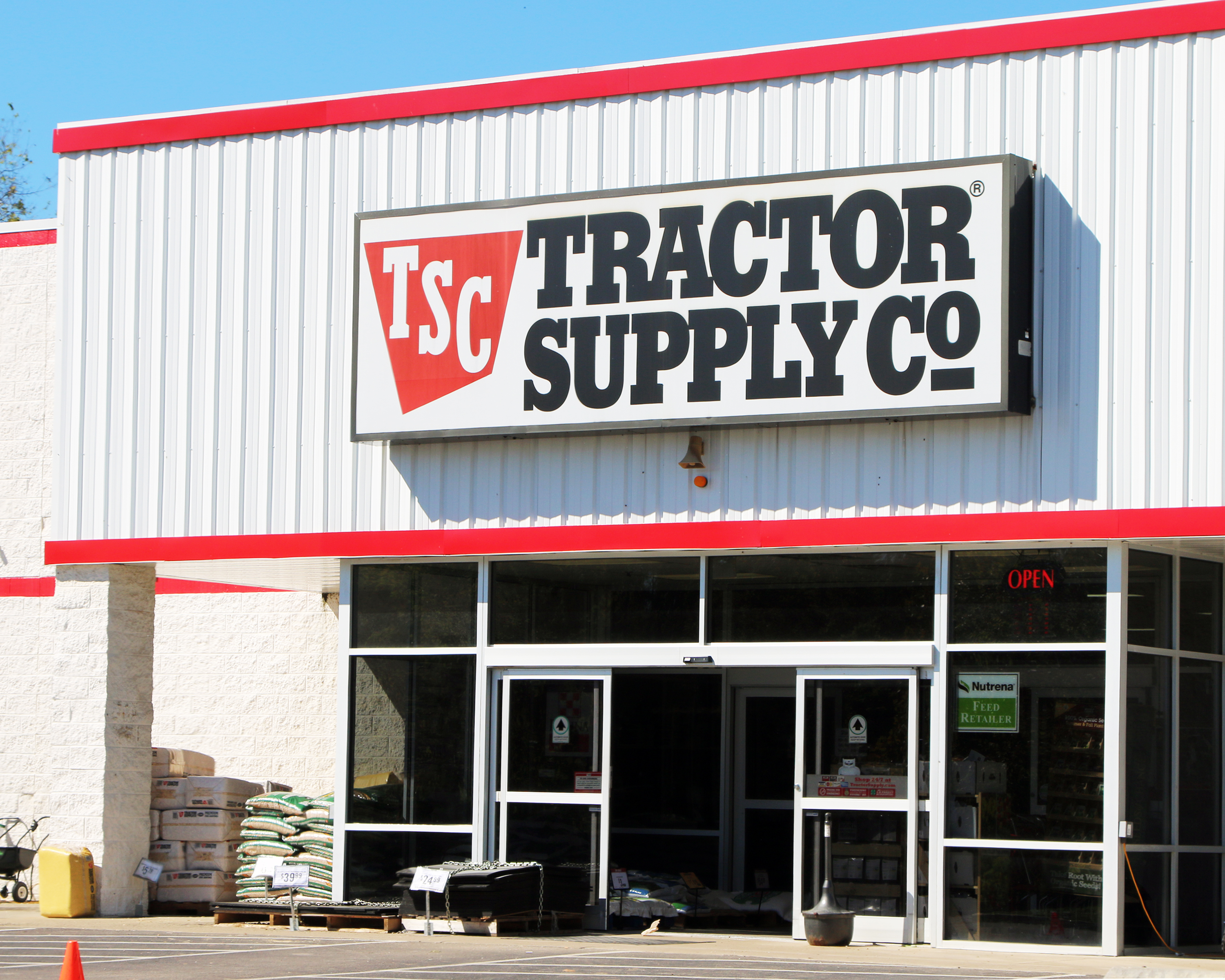
- 25-year cumulative total return: 60,133%
- Growth of $1,000: $601,330
If you live in one of America's large cities, you may think Tractor Supply Company (TSCO) is an industrial parts maker. It's actually a retailer with tens of millions of loyal customers who bought nearly $15 billion worth of their agricultural and animal products there last year.
The Tennessee-based company says its customers have above-average incomes and a lower-than-average cost of living, which is a nice combination to insulate the retailer from economic problems.
Tractor Supply has more than 2,500 stores in 49 states, with about 200 under the banner of Petsense, which it acquired in 2016. The care and feeding of animals is a major part of the business mix: Its livestock, equine and agriculture segment made up 26% of sales in 2024; pets bring in another 25%.
Analyst Joseph Feldman, of Telsey Advisory Group, says the company has room to grow: Tractor Supply plans 100 store openings per year from 2026 through 2030. Its Neighbor's Club loyalty program, which added 6 million members in the past year to reach 40 million, is targeted to reach 55 million in 2030.
Tractor Supply plans to boost sales at existing locations by building out garden centers.
"Overall, we expect the company to continue gaining market share and dominating in rural America," says Feldman. He recommends the consumer discretionary stock and says it could see $60 a share within the next 12 months, about a 13% gain from its recent close.
6. Texas Pacific Land

- 25-year cumulative total return: 55,580%
- Growth of $1,000: $555,800
For most of its first 100-plus years on the New York Stock Exchange, the stock price of Texas Pacific Land (TPL) was as flat as the western prairie. The company traces its roots to a failed attempt to establish a railroad in the 1870s; when it went bankrupt, it placed the land assembled for the project into a trust.
Eventually, oil and gas explorers found the Permian Basin under that dry and dusty Texas land, and the company began to collect royalties. By the turn of the 20th century, it was still a small business: Peak annual revenue was $13.1 million, according to S&P.
Things have improved. Texas Pacific Land collected $706 million in royalty revenue in 2024. And because the company has none of the expenses of drilling, extracting or processing, it is debt-free and has huge profit margins, reporting $454 million in net income last year.
But since 2021, most of the stock's gain has come not from the company's energy bona fides but from speculation that it's an artificial intelligence play. The idea – which TPL embraces – is that companies needing data centers and computing power will build on top of a natural source of energy.
In a May investor call, Chief Financial Officer Chris Steddum said, "we continue to advance discussions" with the owners of data centers. But there's no revenue from that yet.
Earnings estimates are scarce, but the shares trade at a lofty 53 times the past 12 months' earnings, according to S&P Global. Investors seem to be betting on a projection, not an existing business.
7. Old Dominion Freight Line
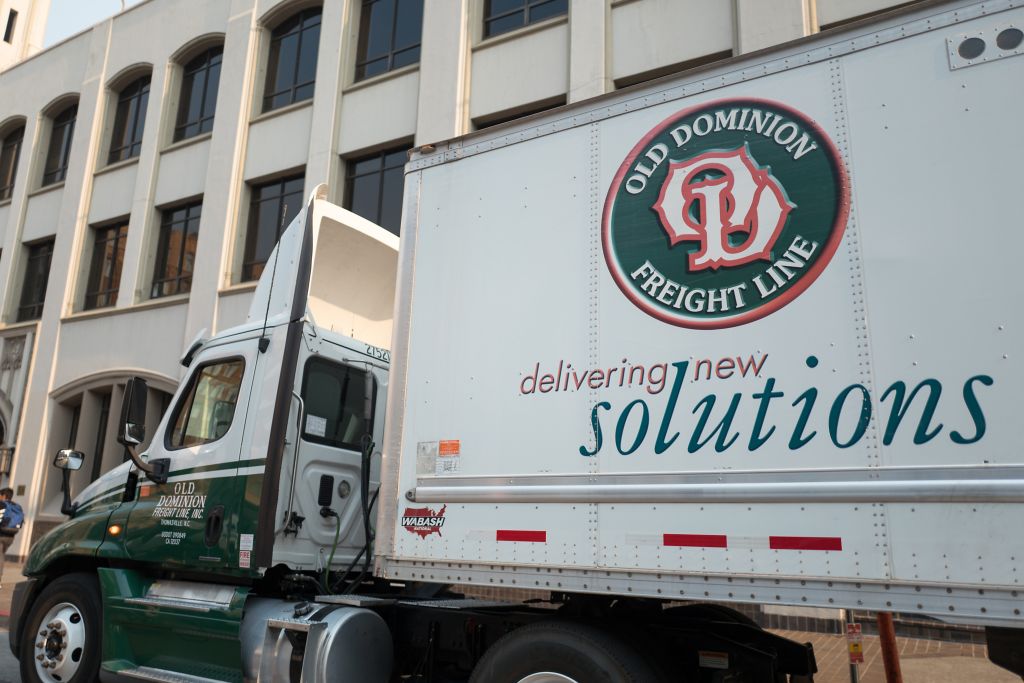
- 25-year cumulative total return: 40,227%
- Growth of $1,000: $402,270
This North Carolina company keeps on trucking. Old Dominion Freight Line (ODFL) is a "less-than-truckload carrier," which means it's willing to accept small shipments – and needs to operate a network of terminals to store its customers' freight.
Year after year, Old Dominion has invested in that network, and it now has more than 200 terminals across the U.S.
"Old Dominion remains committed to playing the long game," says analyst Patrick Tyler Brown, of investment firm Raymond James.
The company is not unionized, which minimizes labor costs. That helped Old Dominion to offer competitive pricing to win new customers when national competitor Yellow collapsed in 2023.
The trucking business is highly dependent on the economy, and fears of a recession have clipped the shares in 2025; they trade at about 30% below their 52-week high. Just eight of 25 analysts who follow the stock are bullish, with three slapping a Sell on the shares.
One is Emily Nasseff Mitsch, of CFRA, who sees the stock headed to $117 a share over the next 12 months, implying a loss of nearly 30% from recent levels, as increased competition and economic uncertainty lead to lower profit margins.
8. Deckers Outdoor
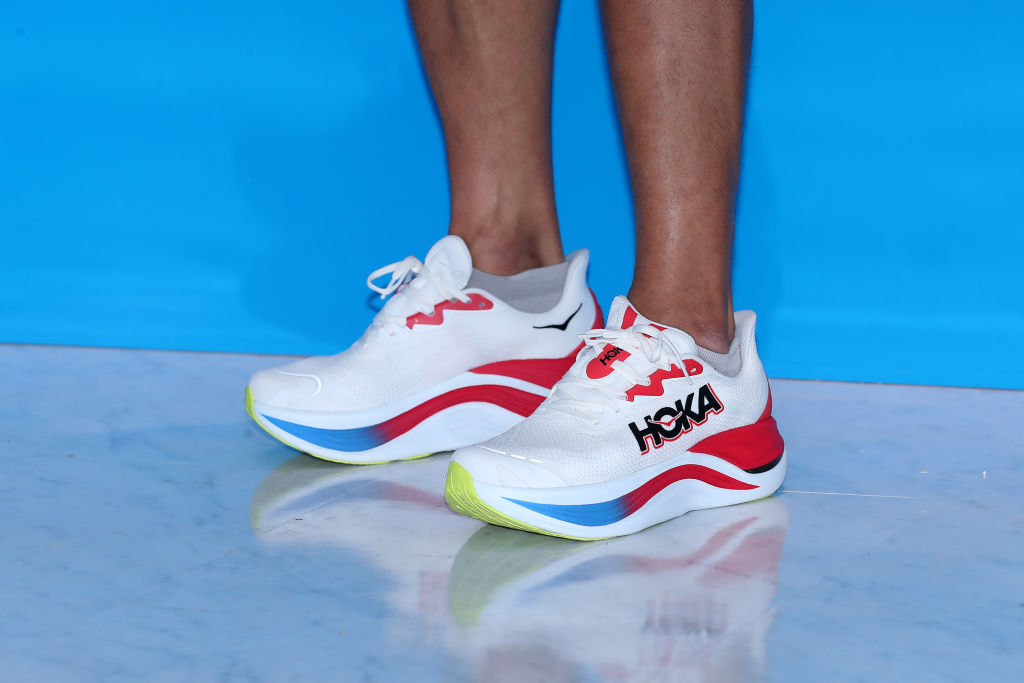
- 25-year cumulative total return: 35,238%
- Growth of $1,000: $352,380
In the world of fashion, one home run can make a company successful. Deckers Outdoor (DECK) has now scored two.
The company started in 1973 in California as a maker of flip-flops, then expanded into sandals with the Teva brand. In 1995, two years after the company sold its stock to the public, Deckers bought the company that made UGG boots. In 1998, Oprah Winfrey featured the boots on her show, and a fashion craze began.
UGGs peaked more than a decade ago, and Deckers has spent considerable time trying to revive the brand, with some success. In the meantime, the company spotted and acquired another wildly successful shoe: Hoka, created by two French trail runners in 2009.
Deckers reportedly paid just $1.1 million for the business in 2012, when it had less than $3 million in sales. Now, it probably accounts for over half of Deckers's $15 billion market capitalization (stock price times shares outstanding), says Morningstar analyst David Swartz. "It must be regarded as one of the most successful acquisitions in the apparel and footwear space ever."
So far in 2025, however, the company has warned that results for the quarter ending in June could come in below expectations, and has declined to provide guidance for the full fiscal year ending March 2026, given economic uncertainty, including the prospect of U.S. tariffs. (Deckers makes most of its products in Vietnam.)
Investors have cut the price of the stock in half this year – which some analysts believe presents a buying opportunity.
Given two market-leading brands, a robust balance sheet and industry-leading profit margins, analyst Zachary Warring, of CFRA, calls Deckers "best-in-class" and rates it a Strong Buy.
9. Tyler Technologies

- 25-year cumulative total return: 35,031%
- Growth of $1,000: $350,310
Tyler Technologies (TYL) sells software and services to local governments – over $2 billion worth in the past year.
Its products include software that ties together human resources, finance and other departments; a management system for local courts; and software that lets governments take payments. Many of the existing systems that governments use are badly out of date and must be replaced, not repaired, giving Tyler more opportunity.
Tyler can weather broader economic challenges better than software companies that sell to businesses, says Trevor Walsh, an analyst at Citizens Capital Markets & Advisory.
But the view that Tyler is a defensive software stock has made it an expensive software stock. Sales have increased about 10% per year over the past three years – modest for the industry. Yet the shares trade at more than 50 times estimated earnings for the next 12 months, a ratio that's roughly double the average of the 35 application-software companies in the S&P 1500, according to S&P Global.
Walsh says Tyler's strong cash flow and market leadership warrant the premium, and more: His 12-month target price for the shares, $700, implies about 18% upside from the stock's recent close. Wall Street generally backs that view; 15 of 20 analysts rate the shares a Buy.
10. Comfort Systems USA

- 25-year cumulative total return: 31,332%
- Growth of $1,000: $313,320
Comfort Systems' (FIX) job is to cool buildings – but its shares have been red-hot. The company is a provider of heating, ventilation and air conditioning (HVAC) systems.
For years, Comfort Systems bought up smaller companies in its highly fragmented industry, primarily in the South. The company emphasizes that its 19,000-person workforce is nonunion, making labor costs lower.
Annual profits have grown from $13 million in 2001 to nearly $600 million today. The balance sheet is nearly debt-free, and the company has raised its dividend 13 years straight.
Investors are excited about the future. The data centers and chip manufacturing plants necessary for AI need robust cooling systems. About 62% of Comfort Systems' revenue comes from its industrial business; a little more than half of that is tech-related.
Seven of eight analysts following the industrial stock are bullish, including Stifel's Brian Brophy. The company's "outsized exposure to data centers and manufacturing construction sets up for a favorable demand environment in the next several years," he says.
This item first appeared in Kiplinger Personal Finance Magazine, a monthly, trustworthy source of advice and guidance. Subscribe to help you make more money and keep more of the money you make here.
Related Content
- Barry Ritholtz: How to Spot Bad Investing Advice and Build a Resilient Portfolio
- If You'd Put $1,000 Into Berkshire Hathaway Stock 20 Years Ago, Here's What You'd Have Today
- The 60-40 Portfolio Rule of Investing: Not Dead Yet?
Profit and prosper with the best of Kiplinger's advice on investing, taxes, retirement, personal finance and much more. Delivered daily. Enter your email in the box and click Sign Me Up.

David Milstead joined Kiplinger Personal Finance as senior associate editor in May 2025 after 15 years writing for Canada's Globe and Mail. He's been a business journalist since 1994 and previously worked at the Rocky Mountain News in Denver, the Wall Street Journal, and at publications in Ohio and his native South Carolina. He's a graduate of Oberlin College.
-
 What to Do If You Plan to Make Catch-Up Contributions in 2026
What to Do If You Plan to Make Catch-Up Contributions in 2026Under new rules, you may lose an up-front deduction but gain tax-free income once you retire.
-
 If You'd Put $1,000 Into Lowe's Stock 20 Years Ago, Here's What You'd Have Today
If You'd Put $1,000 Into Lowe's Stock 20 Years Ago, Here's What You'd Have TodayLowe's stock has delivered disappointing returns recently, but it's been a great holding for truly patient investors.
-
 How to Max Out Your 401(k) in 2026 (New Limits are Higher)
How to Max Out Your 401(k) in 2026 (New Limits are Higher)In 2026, the maximum contribution limits for 401(k) plans have increased, giving you an excellent shot at maximizing your retirement savings.
-
 If You'd Put $1,000 Into Lowe's Stock 20 Years Ago, Here's What You'd Have Today
If You'd Put $1,000 Into Lowe's Stock 20 Years Ago, Here's What You'd Have TodayLowe's stock has delivered disappointing returns recently, but it's been a great holding for truly patient investors.
-
 Don't Trade After-Hours Without Reading This
Don't Trade After-Hours Without Reading ThisAre you a night owl or an early bird with a yen for active trading? Before you transact after-hours, consider these tips and potential traps.
-
 8 Practical Ways to Declutter Your Life in 2026: A Retirement 'Non-Resolution' Checklist
8 Practical Ways to Declutter Your Life in 2026: A Retirement 'Non-Resolution' ChecklistHere's how to stop wasting your energy on things that don't enhance your new chapter and focus on the things that do.
-
 To Retire Rich, Stop Chasing Huge Returns and Do This Instead, Courtesy of a Financial Planner
To Retire Rich, Stop Chasing Huge Returns and Do This Instead, Courtesy of a Financial PlannerSaving a large percentage of your income, minimizing taxes and keeping spending in check can offer a more realistic path to retiring rich.
-
 New Year, New Retirement Rules: Here's How You Can Keep Up as the Landscape Changes
New Year, New Retirement Rules: Here's How You Can Keep Up as the Landscape ChangesFor a successful modern retirement, prepare for a longer life, manage high health care costs and prioritize your social life and purpose.
-
 Stocks End Volatile Year on a Down Note: Stock Market Today
Stocks End Volatile Year on a Down Note: Stock Market TodayAfter nearing bear-market territory in the spring, the main market indexes closed out the year with impressive gains.
-
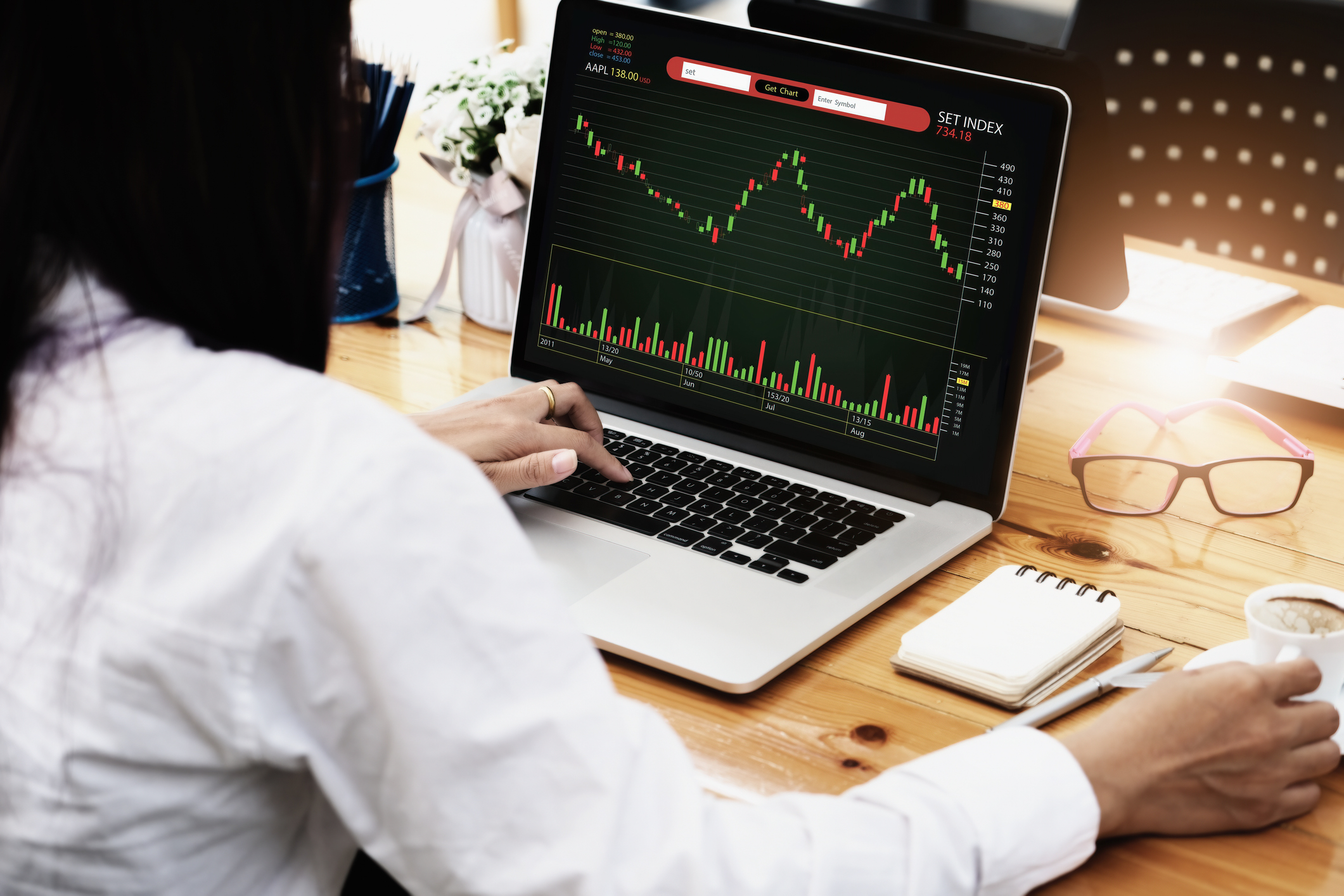 I’m 45 and I’ve Barely Invested in the Stock Market. I Recently Inherited $50,000. What Should I Do?
I’m 45 and I’ve Barely Invested in the Stock Market. I Recently Inherited $50,000. What Should I Do?What should you do with a big inheritance? We asked a financial expert for advice.
-
 A Contrarian Approach Pays Off for This Bond Fund
A Contrarian Approach Pays Off for This Bond FundThe Dodge & Cox Income Fund has outperformed in 2025 thanks to its managers' fearless approach.